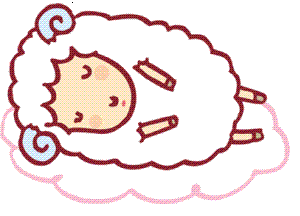Home » Tokyo Food Safety Information Center » Good things to know » Bovine spongiform encephalopathy (BSE) » What is bovine spongiform encephalopathy (BSE)?
What is bovine spongiform encephalopathy (BSE)?
Bovine spongiform encephalopathy (BSE) is a form of transmissible spongiform encephalopathy (TSE)
Also called prion diseases, TSEs are infectious diseases in which abnormal prions (infectious proteins) accumulate on the nerve tissues. In addition to BSE, other diseases caused by prions include sheep and goat scrapie, chronic wasting disease (CWD), and Creutzfeldt-Jakob disease (CJD) in humans.
Characteristics shared by TSE diseases include:
- A long incubation period, from several months to several years.
- Disease pathologically causing vacuolar degeneration and the cells of the central nervous system becoming sponge-like in appearance.
- Progressive and fatal disease of the nervous system.
The brains of animals and people who have contracted a TSE contain abnormal prions, but both people and animals show no specific immune system reaction and TSEs are also characterized by a lack of inflammation.
Characteristics of BSE

BSE is the TSE which has been confirmed to infect cows. Even after infection, BSE has an incubation period during which no signs of contagion show which is said to last for around three to seven years.
Cows which exhibit the signs of BSE infection become oversensitive, aggressive or depressed, experience decreased milk production, and decreased appetite, resulting in wasting and ultimately death.
To date, no method of prevention or treatment has been developed.
Cause of BSE
BSE is caused by the accumulation of abnormal prions in the brain. This has been revealed through investigations and research conducted in the United Kingdom, where BSE first occurred. Unlike other infectious diseases, prions cannot spread through the air or sprays of droplets from coughing and sneezing. Accordingly, unlike bird flu, BSE does not spread explosively among groups of animals to create a mass outbreak.
How did BSE spread?

The cause is believed to be the feeding of meat-and-bone meal (MBM) infected with abnormal prions to cows.
Meat-and-bone meal (MBM) is made by heating and processing the waste meat, bones, and organs left over after butchering an animal, drying the resulting mixture, and grinding it into a powder, and meat-and-bone meal (MBM) has long been used as feed for pigs and chickens and as fertilizer for agricultural products. Ordinarily, meat-and-bone meal (MBM) becomes completely sterilized during the heating stage, which made it a hygienic way as a processing technology to dispose of waste which also prevented environmental pollution. In Europe and North America, meat-and-bone meal (MBM) as animal protein being fed to conventionally herbivorous cattle as a cheap means of increasing milk production and animal weight.
However, abnormal prions from animals somehow infected with BSE through the cycle of reusing ruminants processed into meat-and-bone meal (MBM) and mixed into fodder then fed to other animals, resulted in the widespread infection of BSE. Prions are resistant to sterilization methods such as heating and chemical disinfection, which means they do not lost their ability to cause infection even after being processed into fodder.
In addition, cows fed on fodder polluted with abnormal prions do not immediately reveal signs of their infection, which resulted in their being butchered before discovery to be again turned into meat-and-bone meal (MBM) which was fed to other cattle, leading to the spread of this infection around the world.